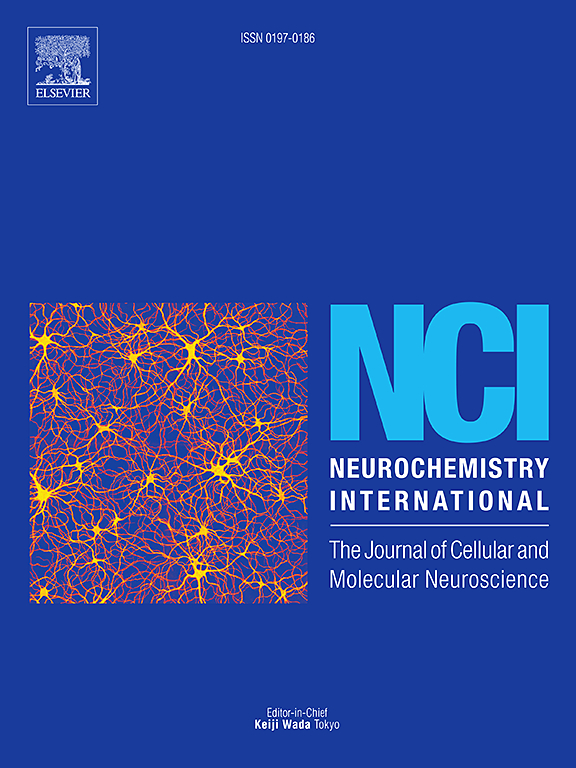非规范STAT3通路诱导lps诱导的小鼠神经炎症模型海马线粒体动态蛋白的改变
IF 4
3区 医学
Q2 BIOCHEMISTRY & MOLECULAR BIOLOGY
引用次数: 0
摘要
STAT3的激活是细胞调控的一个十字路口,在其典型途径中由关键酪氨酸残基(Y705)的磷酸化诱导。最近在体外发现了一种由丝氨酸727 (S727)磷酸化诱导的STAT3非规范信号机制。细胞质激活后,非规范STAT3可以移动到线粒体-内质网接触(MERCs)水平。我们之前的研究表明,LPS注射小鼠模型诱导STAT3典型通路,导致其核易位和神经炎症。然而,LPS对非规范通路激活的影响及其对merc蛋白复合物的影响仍有待确定。在体内LPS小鼠模型中,我们发现全身炎症诱导海马非规范STAT3通路。lps诱导的STAT3特异性影响MERC蛋白BAP31,以及已知与其相互作用的线粒体膜蛋白TOM40。这些发现揭示了炎症条件下STAT3在线粒体-内质网相互作用中的作用,为疾病背景下靶向线粒体功能和STAT3激活提供了新的视角。本文章由计算机程序翻译,如有差异,请以英文原文为准。

Non-canonical STAT3 pathway induces alterations of mitochondrial dynamic proteins in the hippocampus of an LPS-induced murine neuroinflammation model
The activation of STAT3 is a crossroads of cellular regulation, induced in its canonical pathway by phosphorylation on a critical tyrosine residue (Y705). The existence of a STAT3 non-canonical signaling mechanisms, induced by phosphorylation at serine 727 (S727), has been recently identified in vitro. After cytoplasmic activation, non-canonical STAT3 could move to the level of mitochondria-endoplasmic reticulum contacts (MERCs).
We have previously shown that LPS injections in mouse model induce STAT3 canonical pathway, leading to its nuclear translocation and to neuroinflammation. However, the effects of LPS on activation of the non-canonical pathway and its consequences on protein complexes of MERCs remain to be determined. In an in vivo LPS mouse model, we found that systemic inflammation induces in hippocampus the non-canonical STAT3 pathway. LPS-induced STAT3 affects specifically MERC protein BAP31, and that of a mitochondrial membrane protein known to interact with it, TOM40. These findings shed light on the role of STAT3 on mitochondrial – endoplasmic reticulum interaction under inflammatory conditions, offering new perspectives for targeting mitochondrial function and STAT3 activation in disease contexts.
求助全文
通过发布文献求助,成功后即可免费获取论文全文。
去求助
来源期刊

Neurochemistry international
医学-神经科学
CiteScore
8.40
自引率
2.40%
发文量
128
审稿时长
37 days
期刊介绍:
Neurochemistry International is devoted to the rapid publication of outstanding original articles and timely reviews in neurochemistry. Manuscripts on a broad range of topics will be considered, including molecular and cellular neurochemistry, neuropharmacology and genetic aspects of CNS function, neuroimmunology, metabolism as well as the neurochemistry of neurological and psychiatric disorders of the CNS.
 求助内容:
求助内容: 应助结果提醒方式:
应助结果提醒方式:


